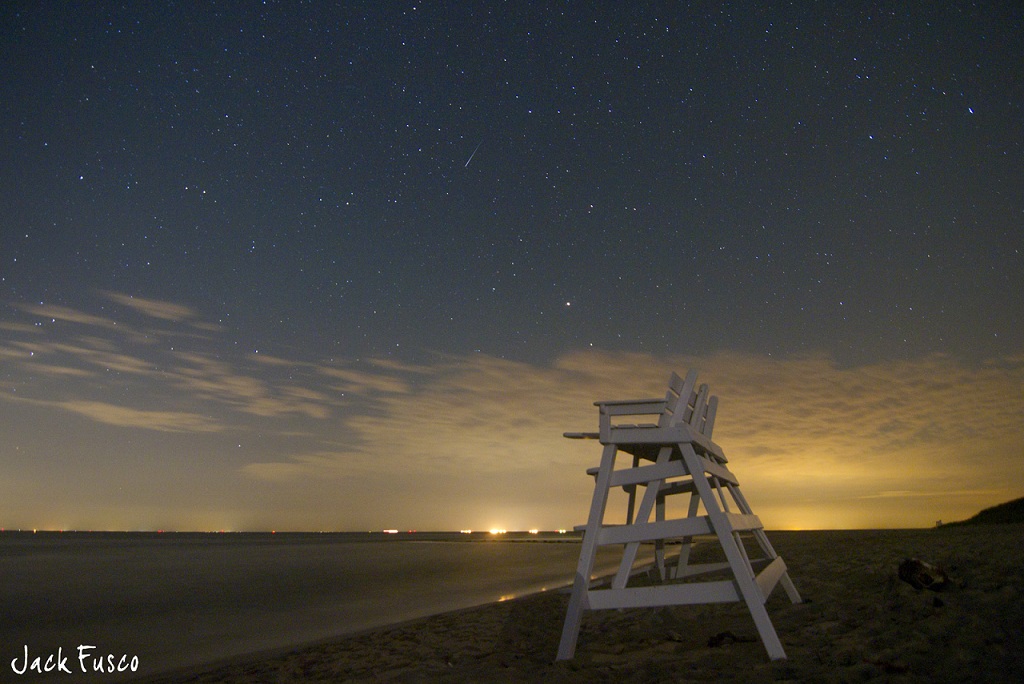
Night sky photographer Jack Fusco captured the meteor as it flared up over Cape May, N.J., beach in the wee hours of June 28, just after the peak of the annual Bootid meteor shower.
"The shower peaked about an hour after the moon had set, at about 2 a.m. EDT," Fusco told SPACE.com in an email. "Overall, it was a beautiful night for stargazing."
June's Bootid meteor shower is created by the remains of the Comet 7P/Pons Winnecke, according to the International Meteor Organisation.
The Bootid shower is classified as a variable meteor shower by the American Meteor Society because its annual displays are often dim, but can sometimes be impressive to lucky stargazers. Variable meteor showers typically only "produce strong activity on rare occasions," the society explains in an overview. "Most of the time, only a few scattered remnants of these showers are observered with rates of one shower member per night."
The Bootid meteor shower is one of several meteor showers to light up the night skies in the next few months.
The annual Delta Aquarid meteor shower is expected to hit its peak on July 29, but will likely be washed out by the nearly full moon, according to a NASA alert.
Next up is the annual Perseid meteor shower, which will peak on Aug. 12 and is typically one of the year's dependable shooting star displays. At its peak, the 2012 Perseid meteor shower could produce up to 100 meteors per hour for stargazers observing the night sky from a dark location, well away from city lights, between 10 p.m. and 11 p.m. local time, NASA officials said.



Reader Comments
to our Newsletter